Beloved Teacher Battles Kidney Disease with Strength and Heart
Tonight, we bring you a story that’s all about strength, perseverance, and the power of a positive spirit. It’s the journey of forty-four-year-old Godfrey Sosa, a name many students at Belize High School know well. He’s the go-to guy for all things tech and robotics. But what many may not know is that for the past two decades, Sosa has been quietly battling kidney disease. Three days a week, while most of us are going about our routines, he’s at the Karl Heusner Memorial Hospital receiving life-saving dialysis treatment. Yet, he continues to show up for his students, his school, and his passion for teaching. Earlier today, we sat down with Sosa and the dedicated team at the hemodialysis unit to learn more about what it takes to live beyond a diagnosis. News Five’s Britney Gordon brings us this inspiring story in this week’s episode of Belize on Reel.
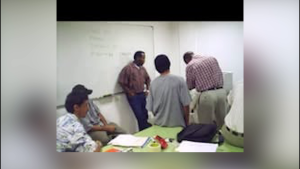 Britney Gordon, Reporting
Britney Gordon, Reporting
Imagine being just twenty-four years old, standing on the edge of your future, about to graduate with a degree in Information Technology. That was Godfrey Sosa back in 2005, young, ambitious, and ready to take on the world. But life had other plans. Out of nowhere, he was hit with a diagnosis that would change everything: kidney disease. In an instant, his dreams were interrupted by a reality he never saw coming. Today, Sosa is not only a respected educator at Belize High School, he’s also a fighter, living with this condition for the past twenty years. Earlier, he sat down with us to share the moment he first heard the news, and how he’s managed to keep going, both in and out of the classroom.
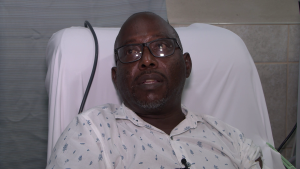
Godfrey Sosa Jr.
Godfrey Sosa Jr., Diagnosed with Kidney Disease
“Mr. Sosa, I’m sorry to inform you, but you have kidney failure. I have no idea what kidney failure was. I didn’t even know what that was because I had no direct symptoms that would indicate that. The first time you hear that and they’re telling you, okay, you either have to do a transplant or you will have to go on dialysis. Hearing that you were still in the denial, I went to three different clinics just to verify if what they said was true. And yeah, it was true. It was really heart wrenching because I was young. I had my whole life ahead of me.”
His family couldn’t afford dialysis or a transplant, but after a heartfelt plea to the public, help came through. The donor? His own father. For a while, things looked up. But six years later, the kidney failed. That’s when Sosa began treatment at the Karl Heusner Memorial Hospital. Despite it all, he’s stayed committed to teaching. Michelle Cassimiro, who manages the hemodialysis unit, says Sosa works hard to balance his job and his health, and he does it with quiet determination.
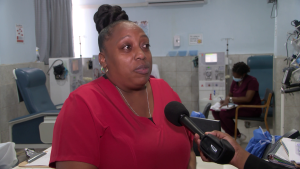
Michelle Cassimiro
Michelle Cassimiro, Manager, Hemodialysis Unit, K.H.M.H.
“When people think of dialysis, they think of dialysis as a death sentence. It’s an end. I can no longer function. I can no longer live. I’m hooked up to this machine forever. But that’s not what we treat. That’s not how we treat our patient here. He goes to school in the morning and he comes here in the afternoon, he does his treatment and ideally the treatment, I believe the treatment is sufficient for him that most of the time he even goes back to work.”
 Sosa receives dialysis treatment three times a week, for four hours at a time. There, he is hooked up to a machine that purifies his blood and pumps it back into his system. Fortunately, at the KHMH, two of the three weekly sessions are subsidized by the government. It’s a tiring ordeal but as Sosa explains, he does it, because he wants to live.
Sosa receives dialysis treatment three times a week, for four hours at a time. There, he is hooked up to a machine that purifies his blood and pumps it back into his system. Fortunately, at the KHMH, two of the three weekly sessions are subsidized by the government. It’s a tiring ordeal but as Sosa explains, he does it, because he wants to live.
Godfrey Sosa Jr
“It’s definitely a mindset that you have to start, developing for yourself in terms of knowing that this is your lifeline. Now if you want to live, there are adjustments that you will have to make to be able to carry out what you need to do.”
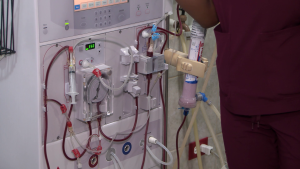 For the past fifteen years, Godfrey Sosa has been a teacher at Belize High School, and he’s also been a mentor, a role model, and a source of inspiration. And while he’s been shaping young minds in the classroom, he’s also been quietly fighting a personal battle. His students adore him, not just for his tech and robotics lessons, but for his resilience. Over the years, they’ve even raised funds to support his treatment. And it’s not just at school where he’s appreciated. Marla Swaso, one of his nurses, says Sosa brings that same passion for education to the hospital, where he’s just as admired for his strength and spirit.
For the past fifteen years, Godfrey Sosa has been a teacher at Belize High School, and he’s also been a mentor, a role model, and a source of inspiration. And while he’s been shaping young minds in the classroom, he’s also been quietly fighting a personal battle. His students adore him, not just for his tech and robotics lessons, but for his resilience. Over the years, they’ve even raised funds to support his treatment. And it’s not just at school where he’s appreciated. Marla Swaso, one of his nurses, says Sosa brings that same passion for education to the hospital, where he’s just as admired for his strength and spirit.
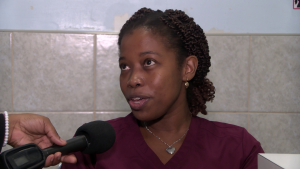
Marla Swaso
Marla Swaso, Nurse, Hemodialysis Unit, K.H.M.H.
“He tries he tries his best, well, he does his best and he makes sure that he reaches for his treatment and he listens when the nurse tell him, okay, you need to cut back on your sodium intake. You need to cut back on your phosphorus intake. He does listen when it comes to that. Yes. And he does try to educate patients. When we have new patients here, he does try and assist them like, okay, yes, you need to listen to the nurse and yes, you need to do this.”
Sosa’s initial diagnosis brought a dark cloud over his life, unsure of where to go and what to do. But over time, he began to see the light again and has now formed a close bond with his nurses and fellow patients. Through this disease, he’s found community.
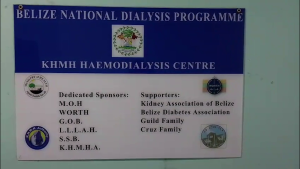 Michelle Cassimiro
Michelle Cassimiro
”Our chair is not a chair for just dialysis treatment. It’s a therapeutic chair. It’s like when you go to the barber shop or when you go to the beauty closet, everything is set in here. We, they have the patient, they have build a bond because they see one another three times for the week. And so what they do along with the staff is that this chair they sit and they discuss the issues that they’re going through and other, and the nurses will advise them. So basically, my, the nurses are not only the nurses. They’re the therapist, they’re the psychiatrist, they’re the nutritionist, they’re everything in one.”
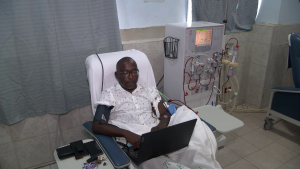 Godfrey uses his story as shining example for other patients that life goes on, despite a diagnosis.
Godfrey uses his story as shining example for other patients that life goes on, despite a diagnosis.
Godfrey Sosa Jr.
“Especially for new patients that come in, I was there once. Feeling down, feeling that there’s no purpose, feeling that, man, I have to be stuck here and how do I cope with the fluid restriction? How do I cope with the dietary restrictions? Things like that. If they hear it from someone who has been here for this amount of time, it could add. As a motivation for them to say, you know what, if he can do it, I can do it.”
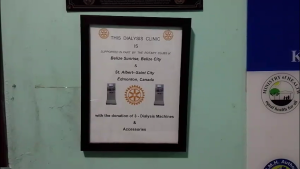 The Hemodialysis Unit at the Karl Heusner Memorial Hospital is doing all it can, but right now, it’s at full capacity, treating twenty-one patients with kidney disease. That means no new patients can be taken in at the moment. Still, the team isn’t giving up hope. Their vision is to one day expand their services and help more Belizeans get the care they need; ideally, even before the disease reaches its critical stages. Britney Gordon for News Five.
The Hemodialysis Unit at the Karl Heusner Memorial Hospital is doing all it can, but right now, it’s at full capacity, treating twenty-one patients with kidney disease. That means no new patients can be taken in at the moment. Still, the team isn’t giving up hope. Their vision is to one day expand their services and help more Belizeans get the care they need; ideally, even before the disease reaches its critical stages. Britney Gordon for News Five.





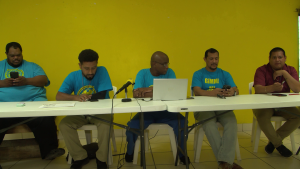
Facebook Comments